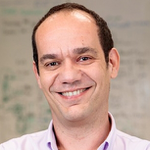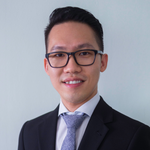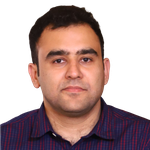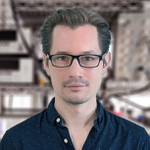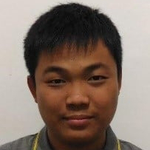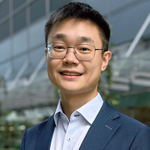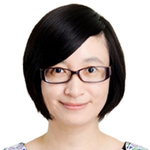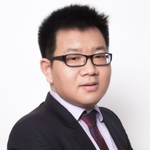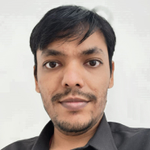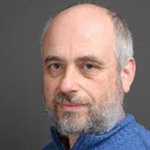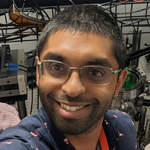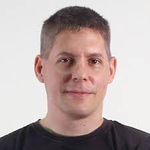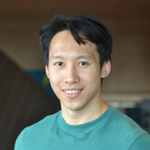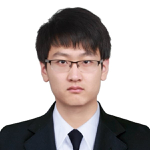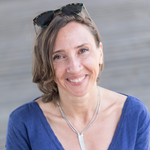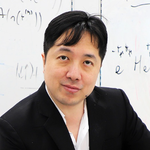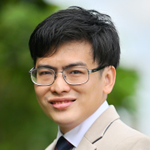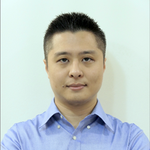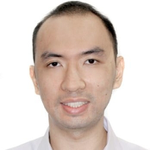- Registration
Registration starts from 8.15am. Please be seated by 8.55am.
- Welcome Address by Professor Lam Ping Koy, Chief Quantum Scientist, A*STAR
- Opening Remarks by Mr Frederick Chew, Chief Executive, A*STAR
- Keynote Talk: Quantum technologies with ultracold gases
Associate Professor David WilkowskiIn addition to well-established applications of ultracold gases such as quantum simulation and quantum sensing, those platforms have recently emerged as promising candidates to realize analog and digital quantum processors. In this presentation, I will present our experimental efforts on these various domains of quantum technologies. I will discuss how we have generated artificial gauge fields to address quantum dynamics in high symmetry Hamiltonian and how we used this knowledge to propose new types of geometric interferometers. I will also present more recent results on inertial sensing using the two clock states on strontium atoms toward more compact devices. Finally, I will present our approach to use structured light to trap atoms below the standard diffraction limit for potential applications in quantum processors.
- Atomically Precise Engineering and Classification of Defects in Semiconducting Quantum Materials
Dr Calvin WongAtomic defects present in semiconductors are important for the development of quantum materials as defects can be intentionally created and operated as qubits, or unintentionally present as decoherence noise sources. Thus, the ability to engineer the placement of atomic defects of interest (dopants) and identifying spurious defects present on the semiconductor material surface is important for building upon these materials. In the first part of the talk, we present our recent progress towards engineering atomically precise dopant placement on a silicon surface using the STM and in the second part, we present defect identification and classification in transition metal dichalcogenides using convolutional neural network (CNN). We compare the performance of a convolutional neural network (CNN) trained solely using theoretical simulated defect images with human classifiers and discuss the implications of our results.
- Morning Tea Break and Poster Session
- "Quantum-Grade” Diamond: Perspective on Synthesis, Characterization and Future Outlook
Dr Apoorva ChaturvediThe emergence of a new technology is often preceded by advances in materials science. Solid-state quantum systems that possess long-lived spin and/or optical coherence are likely to play key roles in the development of a broad range of applications in quantum technology from quantum networks to information processing and quantum sensing. Ultra-pure ‘quantum grade’ crystals can act as a powerful platform and an enabler for emerging quantum technologies. MPCVD offers the potential to grow exceptionally pure diamond on a wafer scale. Although the CVD growth method is relatively mature, crystalline films that can deliver optimized performance in quantum technologies are yet not routinely produced.
MPCVD-grown diamond films are emerging as a go to technology for obtaining ‘quantum grade’ diamond crystals, their availability and know-how remains limited. The overall thickness and size of ‘quantum grade’ diamond is relatively lower in comparison to applications such as power electronics and in gem industry. This puts more emphasis on researchers and engineers to indigenously design and device both the instrument (MPCVD reactor) and the synthesis protocols (fine control over experimental parameters) to achieve high quality, high purity diamond single crystals. In this presentation, I will broadly discuss the development carried out at Nanyang Technological University vis-à-vis the synthesis of ultra-pure diamond, their characterization and their future outlook for emerging applications. - Emergent Materials for Nanoelectronics and Quantum Technologies
Dr Ivan VerzhbitskiyThe ever-growing demand for computational power is driving continuous downscaling in modern electronics, paving the way for the exploration of novel concepts in nanotechnology. Layered semiconducting two-dimensional (2D) and one-dimensional (1D) materials, in particular, have gained considerable attention due to their unique optical, electronic, and thermal properties arising from their dimensionality. These atomically thin materials are strong candidates for the next generation of logic electronics and quantum technologies. Their dangling-bond-free surfaces offer an ideal interface for trap-free integration into devices, while their atomic thickness ensures effective control via electrostatic gating. However, conventional device fabrication techniques cannot be applied to these novel materials. Current industrial methods do not account for the unique demands of delicate monolayer materials, necessitating the development of new fabrication techniques.
In this talk, I will share an outlook on layered materials and their prospects for nanoelectronics and quantum technologies, focusing on unique properties like topological protection, valley degree of freedom, and crystalline anisotropy. I will present our efforts to reveal the intrinsic performance of layered materials through the engineering of field-effect transistors and quantum devices. - Demonstration of a CMOS-Compatible Superconducting Cryogenic Interposer
Dr Hongyu LiAn advanced quantum processor requires millions of qubits but is at present limited in scalabil-ity due to limitations in the wiring of qubits. A 2.5D silicon (Si) interposer provides an attractive solution in enabling the scalability of the qubit devices. However, some qubits, like the supercon-ducting qubits and solid-state spin-orbit qubits, operate in cryogenic temperatures below 1K. Cop-per (Cu) interconnects in conventional Si interposers are not superconductive in nature. As such, these metals contribute to losses and result in resistive heating, which can undesirably increase the temperature of the qubits during operation. We demonstrated the electrical characterization of a cryogenic interposer. A transmission line with TSVs was fabricated and characterized at room tem-perature and 10 mK. The extracted average loss per TSV is ~ 0.4 dB at 10mK within 4-6 GHz. That means TSVs can be used to carry microwave signals between the different chip surfaces in our fu-ture superconducting quantum processor. The frequency shift Δfr for dense TSV resonator chip is much larger than for sparse TSV chip, which creates a method to optimize the resonator frequency.
- National Quantum Federated Foundry for Integrated Quantum Photonics Innovation
Dr Adrian Nugraha UtamaThe National Quantum Federated Foundry (NQFF) is a national foundry platform in Singapore that provides researchers access to state-of-the-art capabilities in device design, fabrication, and characterization across universities and research institutions. We support various quantum-driven researches and qubit platforms, and in this talk, I am focusing on integrated photonics as a platform for ion-trap and photonic based quantum devices and quantum computers. I will present the performance of our recently fabricated photonic building blocks, such as waveguides, couplers, resonators, splitter, etc, and showcase our photonic characterization capabilities and the innovation thereof. As a quantum-focused foundry, we aim to support various quantum researchers in Singapore and around the world in bringing quantum devices forth into mainstream reality.
- Lunch
- Keynote Talk: Closing the gap between Si photonic chips and bulk crystals in quantum networks
Associate Professor Alexander LingSpontaneous Four-Wave Mixing in Si photonic chips has been possible for a number of years, but their deployment in quantum networking has lagged behind the use of Spontaneous Parametric DownConversion using bulk crystals. One reason is that quantum networking requires efficient and robust coupling to transmission systems, either in fiber or free-space optical channels. The team at SpooQyLab in CQT has recently demonstrated a simple, robust and efficient technique for extracting photon pairs from a Si photonic chip, employing a strategy of marginal gains. The technique has resulted in direct observation of over 500,000 entangled photon pairs per second, which is sufficient to demonstrate polarization entanglement distribution over a metropolitan fiber channel with -17 dB of attenuation (equivalent to 93 km of deployed fiber). This experiment marks a milestone in the performance of Si photonic chips for quantum networking.
- Integrated quantum photonics on thin-film lithium niobate
Dr Di ZhuScaling today’s photonic quantum technologies to realize practical computation and simulation faces critical challenges. It requires complex systems with thousands to millions of components, which are difficult to implement using traditional bulk optics. Integrated photonics is likely the only solution. In this talk, we will describe our research efforts on developing integrated photonic devices for scalable quantum information processing. Specifically, we identify thin-film lithium niobate (TFLN) as a promising material platform for this purpose. It offers many attractive properties that are critically missing in existing leading platforms, such as large electro-optic and piezoelectric coefficients, strong second-order nonlinearity, and engineerable ferroelectric domains. We will describe our recent results on implementing some key quantum functionalities on this platform, such as efficient photon-pair generation, bi-photon frequency comb generation, single-photon frequency control, and integrated single-photon detectors.
- Afternoon Tea Break and Poster Session
- Lighting the Future: Advancing Quantum Nanophotonics with Forward & Inverse Designs
Associate Professor Lin WuThis talk explores design strategies in cavity quantum electrodynamics (Cavity-QED) from forward and inverse perspectives. We will revisit our theoretical proposals in forward design, presenting new experimental insights through five case studies, such as quantum plasmonic immunoassay sensing. In the inverse design segment, we introduce our latest advancements in quantum nanophotonics, where we combine the local density of states with deep learning to innovate and optimize design processes. This approach offers a novel and transformative pathway for advancing quantum photonics.
Recent advances in inverse-design approaches for discovering optical structures based on desired functional characteristics have reshaped the landscape of nanophotonic structures, where most studies have focused on how light interacts with nanophotonic structures only. When quantum emitters (QEs), such as atoms, molecules, and quantum dots, are introduced to couple to the nanophotonic structures, the light-matter interactions become much more complicated, forming a rapidly developing field – quantum nanophotonics. Typical quantum functional characteristics depend on the intrinsic properties of the QE and its electromagnetic environment created by the nanophotonic structures, commonly represented by a scalar quantity, local-density-of-states (LDOS). We introduce a generalized inverse-design framework in quantum nanophotonics by taking LDOS as the bridge to connect the nanophotonic structures and the quantum functional characteristics. We take a simple system consisting of QEs sitting on a single multilayer shell–metal–nanoparticle (SMNP) as an example, apply fully connected neural networks to model the LDOS of SMNP, inversely design and optimize the geometry of the SMNP based on LDOS, and realize desirable quantum characteristics in two quantum nanophotonic problems: spontaneous emission and entanglement. Our work introduces deep learning to the quantum optics domain for advancing quantum device designs. - Towards On-Chip Quantum Light Sources with Multi-Dimensional Control
Dr Zhaogang DongSolid-state quantum emitters are essential sources of single photons, and enhancing their emission rates is of paramount importance for applications in quantum communications, computing, and metrology. One approach is to couple quantum emitters with resonant photonic nanostructures, where the emission rate is enhanced due to the Purcell effect. Dielectric nanoantennas are promising as they provide strong emission enhancement compared to plasmonic ones, which suffer from high Ohmic loss. Here, we designed and fabricated a dielectric Fano resonator based on a pair of silicon (Si) ellipses and a disk, which supports the mode hybridization between quasi-bound-states-in-the-continuum (quasi-BIC) and Mie resonance. We demonstrated the performance of the developed resonant system by interfacing it with single photon emitters (SPEs) based on nitrogen-vacancy (NV-) centers in nanodiamonds (NDs). We observed that the interfaced emitters have a Purcell enhancement factor of ~10, with sub-ns emission lifetime and a polarization contrast of 9. Our results indicate a promising method for developing efficient and compact single-photon sources for integrated quantum photonics applications.
- Interfacing Phonons with Solid State Quantum Emitters
Dr Cleaven ChiaPhonons - quanta of mechanical vibrations - couple intrinsically to various quantum systems through strain and stress. As such, phonons can serve as versatile transducers between vastly different quantum systems such as photons and solid-state spins. However, incoherent thermal phonons exist at all frequencies and act as a source of noise, causing qubits to lose their coherence. As such, engineering of phonon modes is required to maximise coupling between qubits and coherent phonon modes, and to minimise the interactions with thermal phonons. In my talk, I will give an overview of how phonon modes can be engineered in quantum devices for coupling to qubits. Specifically, I will introduce diamond as a candidate material for coherent qubit-phonon coupling in the solid state, between silicon vacancy centre spins and localised modes in phononic crystals.
- Reconfigurable Chiral Spintronic Terahertz Emission
Dr Piyush AgarwalQuantum materials host exotic electronic and magnetic states, such as topological insulators, Weyl semimetals, and superconductors, with unique properties that can revolutionize electronics, spintronics, and quantum computing. Utilizing spontaneous symmetry breaking, phase transitions, and renormalizations helps understand microscopic spin textures like skyrmions, merons, and chiral solitons. However, detecting these quantum states remains challenging due to the complexity of current microscopic techniques. Here, we provide a novel route to detect exchange coupled quantum states in a model system of synthetic antiferromagnets. As such, the femtosecond photoexcitation of the synthetic antiferromagnetic heterostructure(FM1/Ru/FM2) is observed to generate a pair of linearly polarized ultrafast spin currents, which, upon relaxation at the FM/Ru interfaces, emit pair of THz pulses. The Ruderman–Kittel–Kasuya–Yosida interactions between the two ferromagnets exhibit magnetic-field-controlled relative spin textures and produce orthogonal components of THz waves as a distinct signature. Further, the relaxation asymmetry between the collinear and transverse spins at the FM/Ru interfaces creates a phase shift in the orthogonal THz components and introduces chirality across the entire bandwidth which opens a unique optical route to probe coupled spin textures within two FMs leading to emergence of chiral THz spectroscopy.
- Networking
- Keynote Talk: Sensing with Nitrogen-Vacancy Centers in Diamond Simplified
Prof Dmitry BudkerWe will review some of the recent work on microwave-free sensing at near zero and finite magnetic fields taking advantage of level-anticrossings/cross-relaxation features. These techniques are simpler to implement than the optically detected magnetic resonance (ODMR) and have advantages in applications, for example, to biological systems, where microwaves are undesirable.
- Coherent levitation, a new frontier in quantum sensing
Dr Ruvi LecamwasamOptomechanical systems are some of the most precise sensors in existence, such as the LIGO gravitational wave observatory, which can detect distortions in spacetime 1,000 times smaller than a proton. Tabletop optomechanical systems could answer outstanding questions about quantum gravity and collapse mechanisms, and provide compact quantum sensors for applications such as navigation and subsurface mapping. The fundamental limit to these sensors is due to thermal noise from the environment. The flourishing field of levitated optomechanics uses optical or electromagnetic fields to sever the environmental connection, providing such exquisite isolation that we can approach the quantum ground state at room temperature. However, current approaches are limited to microparticles, and inevitably scatter quantum information away into the environment.
This talk will introduce work at A*STAR pioneering new approaches to levitation, which can support masses of milligram or larger, and unlock quantum control and measurement. This combines emerging research in optical, diamagnetic, and superconducting levitation. Significant challenges emerge when we try to stabilise and control such large systems, and interface the different levitation methods. However, we will see that these also introduce new opportunities for quantum sensing, as well as a pathway to new kinds of commercial sensors. - Morning Tea Break and Poster Session
- Quantum Sensing: From Laboratory Setups to Applications in the Field
Associate Professor Rainer DumkeQuantum sensing represents a revolutionary approach in precision measurement, leveraging the unique properties of quantum states such as superposition and entanglement. This talk will provide a comprehensive overview of quantum sensing technologies, highlighting key advancements and their advantages over classical sensing methods. We will investigate the diverse applications of quantum sensors, spanning from geoscience to fundamental physics research.
Our focus will then shift to the cutting-edge quantum sensing platforms developed at Nanyang Technological University (NTU). Special emphasis will be placed on our portable atomic gravimeter, which has demonstrated enhanced accuracy in large-scale surveys.
The transition from laboratory research to practical field applications will be illustrated through examples of comprehensive field studies. Future directions for our research, such as the development of a turn-key portable accelerometer platform and guided atom interferometry, will also be explored.
This presentation aims to highlight the maturity and field-readiness of quantum sensors, emphasizing their traceability to fundamental constants and their potential to revolutionize precision measurement across various domains. - Infrared Metrology with Visible Light
Dr Anna PaterovaInfrared (IR) wavelengths is a region of big interest and importance, since a number of molecules present their fingerprint absorption properties at this range. Thus, IR spectroscopy and IR imaging are important tools for measurement of chemical composition across different regions of a specimen. Conventional techniques of IR micro-spectroscopy are based on using synchrotron light sources or quantum cascade lasers (QCLs) and arrays of IR point detectors, referred to as focal plane arrays (FPAs). However, these light sources have limited tunability range and high cost. Furthermore, IR photodetectors suffer from strong background noise and require cooling to increase the signal-to-noise ratio, which results in high cost and limited sensitivity.
In our works we offer an alternative approach with indirect detection of IR light using an induced coherence phenomenon, which allows inferring the IR properties of the specimen from the detection of visible light. This method is demonstrated in several applications, including IR imaging, IR spectroscopy, and IR optical coherence tomography. I our recent work we also investigate IR polarimetry to measure the properties of the sample in the mid-IR range. Our experimental results are in good agreement with literature data, which validates our approach. Thus, our technique allows us to perform chemical mapping of the sample and can potentially be used for medical diagnostics and chemical analysis. - Quantum Sensing and Information with Atomic Vapors
Dr Junyi LeeWarm atomic vapors can achieve longer spin coherence times than condensed matter systems without requiring any cryogenic cooling, and they have number densities orders of magnitude larger than in cold atomic systems. Since the minimum uncertainty of a measurement at the standard quantum limit scales inversely with both the coherence time and number density, this makes warm atomic vapors an attractive platform for many practical sensing applications where cryogenic cooling is prohibitively cumbersome. Moreover, since every atom is intrinsically identical to each other without any “fabrication errors”, atomic systems are useful in applications requiring high stability or accuracy. In this talk, I will outline our work at A*STAR to measure terrestrial scale magnetic fields at a part per billion precision, enable precise inertial navigation with compact low bias instability gyroscopes, as well as other upcoming quantum sensing and information projects.
- Near-Field Seeing the Colorful Quantum World with 6 nm Resolution
Dr Xuezhi MaThe 2023 Nobel Prize in Chemistry, awarded for advancements in quantum dot technology, underscores the significant impact of these nanoscale particles across various scientific fields, including imaging, electronics, and medicine. A crucial aspect of quantum dot research is the characterization of their optical behaviors at extreme spatial resolutions. Visible light, ranging from approximately 380 nm (violet) to 750 nm (red), serves as the most informative band for this purpose. However, quantum dots, typically sized between 2 nm and 10 nm, are far below the diffraction limit (~λ/2). This makes it impossible to resolve individual quantum dots within a cluster or other quantum materials using conventional optical microscopy. Modern microscopy techniques aim to enhance spatial resolution by either strengthening light-matter interactions or reducing the size of the light source to below the wavelength scale. In this talk, I will discuss how we leverage 'nanofocusing' to produce a sub-5nm broadband 'white light' source, spanning 415nm to 980nm, which enables a microscope to resolve features as small as 6nm. Using this advanced tool, we have uncovered a colorful nano-world where structures smaller than 10 nm can be visualized. Remarkably, for the first time, we are able to observe carbon nanotubes—materials known for being among the darkest—displaying color at the nanoscale. This NSOM technique provides a powerful tool to investigate quantum materials at the sub-10 nm scale. Looking ahead, this technique promises breakthroughs in quantum material research, next-generation electronics, efficient solar cells, and innovative medical imaging, driving advancements across multiple scientific disciplines.
- Lunch
- Keynote Talk: Harnessing Qudits
Prof Barry SandersConceptually, much of quantum information science—sensing, communication, computing and simulation—is built on an edifice of two-level systems physically or quantum binary digits (qubits) and quantum operations on qubits logically. However, physical realisations of qubits typically have d>2 Hilbert-space dimensions, and some tasks are enhanced by, or even require, d>2, so working with ``qudits'' is necessary. Obstacles to using qudits—compared to qubits—are mathematical complexity, quantum-control challenges, and the need to generalise quantum benchmarking, error correction and algorithms in nontrivial ways that can require restrictions such as prime dimension. We explain qudits mathematically and physically and what has been done so far with qudits and where qudits going.
- Analyzing energy exchanges between a qubit and a light field
Dr Alexia AuffèvesQuantum energetics is an emerging research field exploring the fundamental laws governing the flows of energy, entropy and information in the quantum realm. A natural starting point is provided by two coupled quantum systems, which can exchange energy in two forms: “unitary energy”—that can be used to drive another system—and “correlation energy”—that reflects past correlations. In this talk, I will present the results reported in Phys. Rev. Lett. 131, 260401, where we propose and implement experimental protocols to access these energy transfers during interactions between a quantum emitter and light fields. I will discuss how these results contribute to understand the energetic cost of quantum computing with light, in the broad picture of the newly founded quantum energy initiative.
- Classical shadows with Pauli-invariant unitary ensembles
Dr Dax KohClassical shadows provide a noise-resilient and sample-efficient method for learning quantum system properties, relying on a user-specified unitary ensemble. What is the weakest assumption on this ensemble that can still yield meaningful results? To address this, we focus on Pauli-invariant unitary ensembles—those invariant under multiplication by Pauli operators. For these ensembles, we present explicit formulas for the reconstruction map and sample complexity bounds and extend our results to the case when noise impacts the protocol implementation. Two applications are explored: one for locally scrambled unitary ensembles, where we present formulas for the reconstruction map and sample complexity bounds that circumvent the need to solve an exponential-sized linear system, and another for the classical shadows of quantum channels. Our results establish a unified framework for classical shadows with Pauli-invariant unitary ensembles, applicable to both noisy and noiseless scenarios for states and channels and primed for implementation on near-term quantum devices. Based on: Kaifeng Bu, Dax Enshan Koh, Roy J Garcia, and Arthur Jaffe. “Classical shadows with Pauli-invariant unitary ensembles.” npj Quantum Information (2024)10:6; https://doi.org/10.1038/s41534-023-00801-w.
- Afternoon Tea Break and Poster Session
- Quantum Simplicity: Where Big Data Meets Quantum Science
Associate Professor Mile GuThe 21st century is often named the age of big data. We are flooded with information, and the ever more pressing need is to be able to distill useful models from such data so that we may better understand underlying causes, forecast future events, and steer such futures to those that we most desire. As the underlying systems and environments we seek to model become ever more complex, such tasks become ever more computationally intensive, with memory and energy costs growing at completely unsustainable rates.
Could quantum technologies present an unorthodox solution?
In this talk, I survey our recent work at the Nanyang Quantum Hub in quantum-enhanced causal inference and illustrate how quantum mechanics may help us better isolate the causes of natural things. I show how this allows us to design quantum machines that drastically reduce the resources needed for simulation, prediction, and risk analysis, and its potential future in enabling intelligent autonomous agents to performance levels classically impossible under similar resource constraints. - Quantum Volunteer Dilemma
Dr Siong Thye GohThe volunteer's dilemma is a well-known game in game theory that models the conflict players face when deciding whether to volunteer for a collective benefit, knowing that volunteering incurs a personal cost. In this work, we introduce a quantum variant of the classical volunteer’s dilemma, generalizing it by allowing players to utilize quantum strategies. Employing the Eisert–Wilkens–Lewenstein quantization framework, we analyze a multiplayer volunteer dilemma scenario with an arbitrary number of players, where the cost of volunteering is shared equally among the volunteers. We derive analytical expressions for the players' expected payoffs and demonstrate the quantum game's advantage over the classical game. In particular, we prove that the quantum volunteer's dilemma possesses symmetric Nash equilibria with larger expected payoffs compared to the unique symmetric Nash equilibrium of the classical game, wherein players use mixed strategies. Furthermore, we show that the quantum Nash equilibria we identify are Pareto optimal. Our findings reveal distinct dynamics in volunteer dilemma scenarios when players adhere to quantum rules, underscoring the strategic advantage of decision-making in quantum settings.
- Emulating Quantum Computing Hardware with Qibolab
Dr Jun Yong KhooThe development of quantum computers needs reliable quantum hardware and tailored software for controlling electronics specific to various quantum platforms.
Middleware is a type of computer software program that aims to provide standardized software tools across the entire pipeline, from high-level execution of quantum computing algorithms to low-level driver instructions tailored to specific experimental setups, including instruments. Of equal importance is to provide quantum hardware emulation within the same software for purposes of testbedding and calibrating control pulses, as well as testing calibration and characterization routines for the corresponding quantum hardware especially when it is unavailable or when there is limited access. In this talk I will briefly introduce Qibolab, an open-source software library for quantum hardware control integrated within the Qibo quantum computing middleware framework. Qibolab enables experimentalists and developers to delegate all complex aspects of hardware implementation to the library so they can standardize the deployment of quantum computing algorithms in an extensible hardware-agnostic way, using superconducting qubits as the first officially supported quantum technology. From describing the various key components of the library, I will segway into the latest addition to Qibolab – the quantum hardware emulator. The Qibolab emulator loads the existing settings of a specific quantum hardware and constructs a pulse-level simulation model to mimic its behaviour. I will showcase its currently available features, discuss its potential applications, and conclude with future development plans. - Qibochem: A Software Package for Chemistry Simulations with a Quantum Computer
Dr Zi Cheng WongIt is often said that Chemistry is one of the killer applications of quantum computing. In this talk, we present Qibochem, an open-source Python plugin to the Qibo software library for running chemistry simulations on a quantum computer. The key features of Qibochem include an effective Hamiltonian construction for active space simulations and code for several circuit ansatzes to run variational quantum simulations. Other than that, Qibochem also inherits the functionality of the Qibo library, which includes features such as the simulation of noisy circuits and the application of noise mitigation techniques. Lastly, Qibo provides various backends for the classical simulation of quantum circuits with either a CPU or GPU setup, libraries for the deployment and calibration of quantum circuits on quantum hardware, and access to cloud quantum hardware as well. This makes Qibochem a flexible tool that is capable of running both simulations and experiments with actual physical hardware.
- Networking
